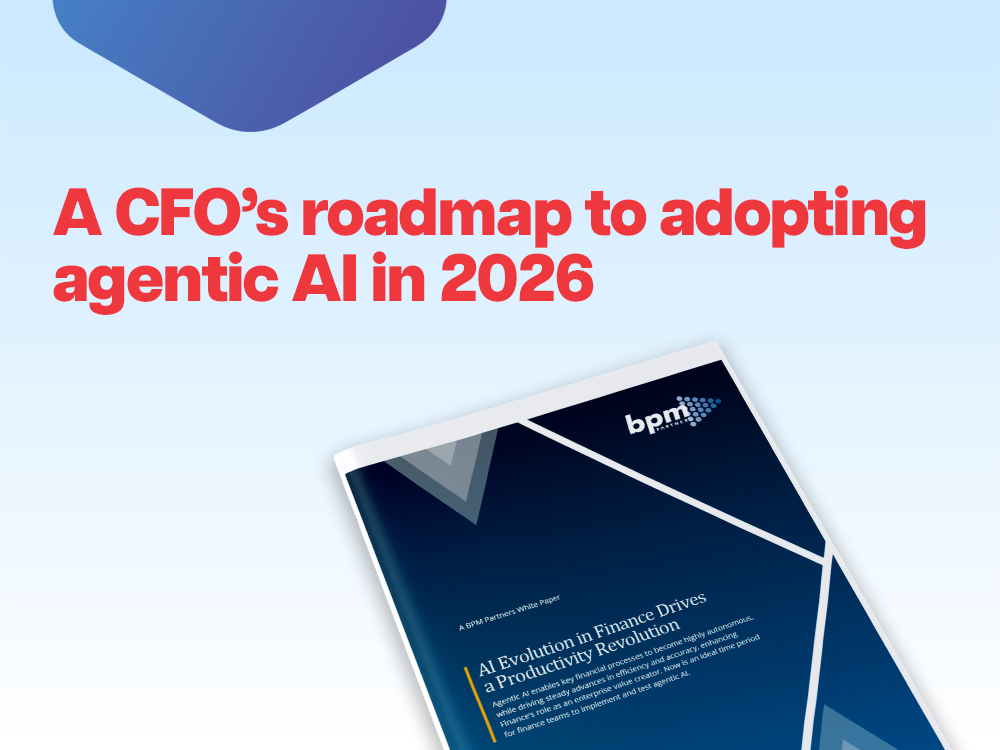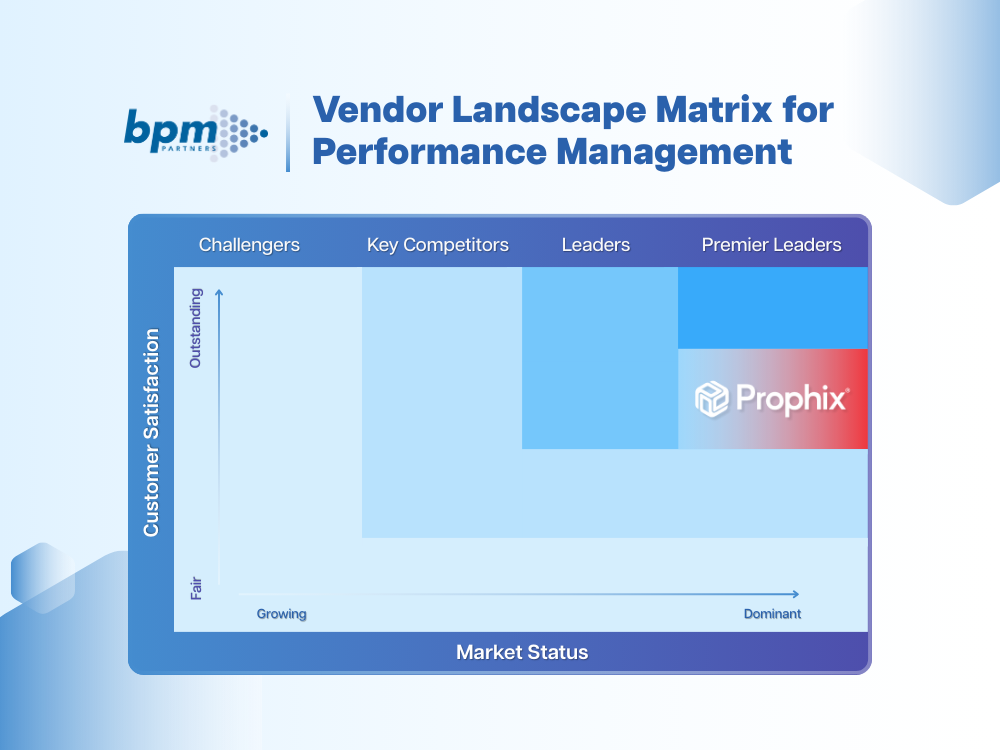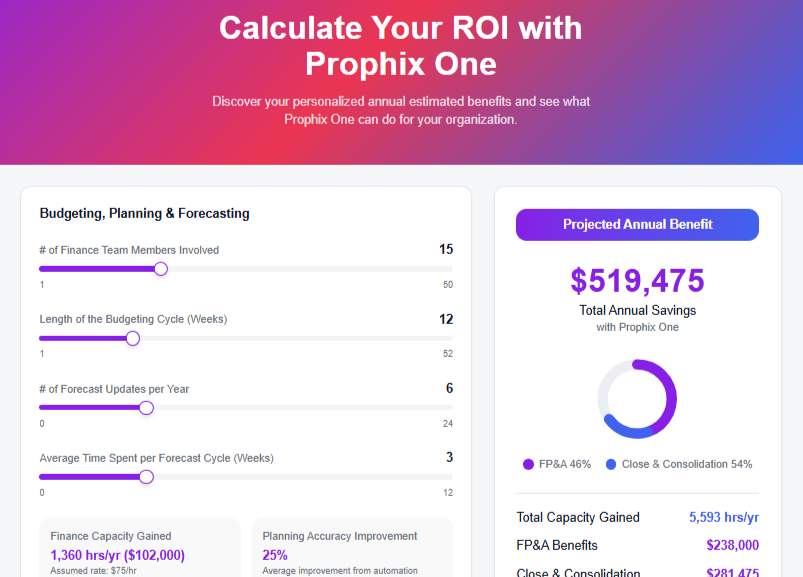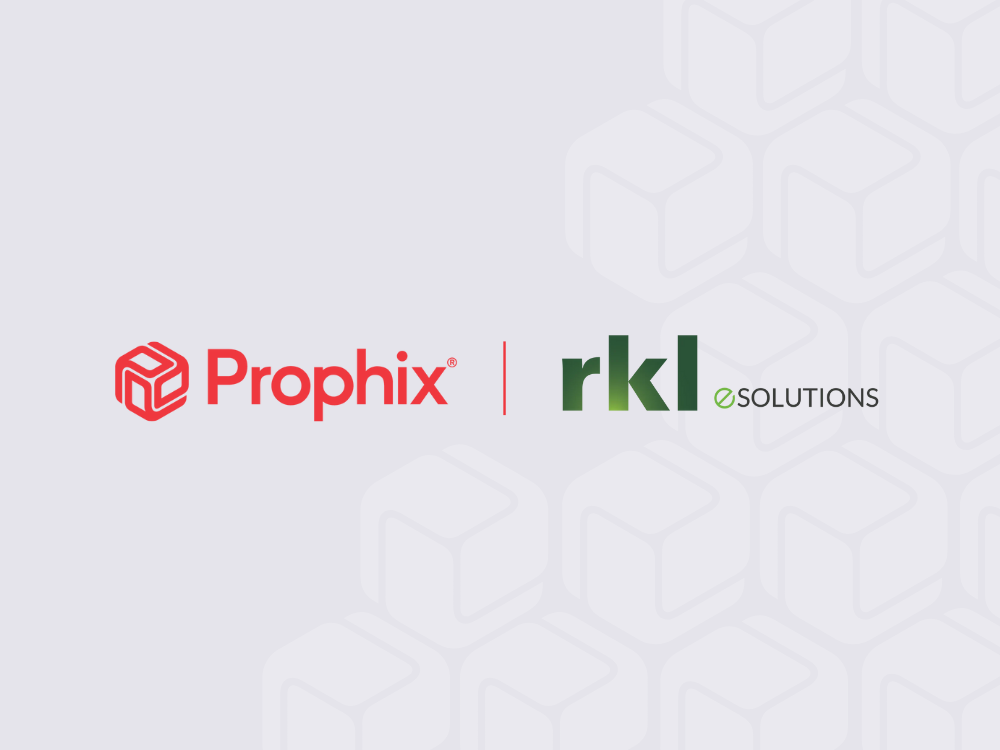Download the BPM Partners Whitepaper
Best Financial Management Software Solutions for CFOs
The bar is rising in finance. There’s less room for error, fewer resources, and higher demands. And the only way to keep pace is with financial management software.
September 2, 2025The bar is rising in finance. There’s less room for error, fewer hands on deck, and higher demands on CFOs. And the only way to keep pace is with financial management software.
IBM found that 65% of CFOs feel pushed to show ROI from tech investments. At the same time, compliance demands and data accuracy expectations keep growing. Finance teams need to do more with less—and do it well.
This guide covers the top 9 financial management software to keep in mind. Each one brings something different to the table. Use it to find the right fit for your team.
Financial management software helps businesses track their finance processes in one place. It gives you an accurate view of your financial performance across your key processes, like FP&A and financial close, so you can take charge of your business growth with real-time insights and visibility.
With financial management software, finance teams can make fewer errors and get more time back in their day. Access to real-time data makes it easier to make well-informed decisions on everything related to budgets, forecasts, and cash flow.
The demand is clear. Gartner expects financial management software to reach a value of $24.4 billion by 2026, as more businesses look for better ways to stay on top of their numbers.
Top 9 financial management software
Finance leaders today have no shortage of options when it comes to financial management software. However, not every solution fits the same mold. Some focus on automation, others on forecasting, while a few aim to replace your entire ERP.
The key is finding a platform that fits your size, industry, and growth stage without adding complexity. In this guide, you’ll find 9 top financial management tools, each built for different needs.
1. Prophix One
Prophix One, a Financial Performance Platform, brings planning, reporting, and performance management into one platform. It’s built for CFOs who want visibility, speed, and control without depending on IT.
Budgeting, forecasting, cash flow, and scenario analysis all happen in one place, so finance teams can move faster and make better decisions.
Key strengths
- Centralized planning and reporting
- Automation and AI insights to reduce manual work
- Easy cross-team collaboration
- Industry-specific features
Ideal for: Midsize to large businesses that need to scale
Pricing: Custom
Compared to others: Most tools focus on one area. Prophix One brings everything together so teams can stay aligned. Prophix One allows finance teams to start with the applications they need to move their business forward today, and scale effortlessly as business needs grow.
2. Tipalti
Tipalti helps finance teams automate payables, global payments, and compliance. It’s a strong fit for fast-growing companies with high transaction volumes.
Key strengths
- Advanced AP automation
- Global payment capabilities
- Tax and fraud protection
Ideal for: Companies handling lots of vendor payments across regions
Pricing: Starts at $139 per month
Compared to Prophix One: Tipalti focuses on payables. It doesn’t cover planning or performance the way Prophix One, an FP&A software, does.
3. Mosaic
Mosaic is a lightweight FP&A tool made for startups and small teams. It offers fast reporting, simple dashboards, and smooth integration with accounting tools.
Key strengths
- Easy-to-use dashboards
- Real-time sync with financial systems
- Quick setup
Ideal for: Startups or finance teams building their first planning process
Pricing: Custom
Compared to Prophix One: Mosaic is great for early-stage teams. Prophix One provides more advanced planning and modeling for companies that need to grow fast.
4. NetSuite
NetSuite is a cloud ERP with built-in finance, CRM, and inventory tools. It helps businesses manage operations and financials in one system with real-time visibility.
Key strengths
- Complete ERP suite
- Real-time data access
- Built-in compliance and reporting
Ideal for: Companies looking for a combined ERP and finance platform
Pricing: Custom
Compared to Prophix One: NetSuite offers broad ERP coverage. Prophix One focuses on deeper planning and performance insights.
5. Acumatica
Acumatica is a flexible ERP platform for small to midsize businesses. It’s cloud-based, easy to customize, and integrates well with other systems.
Key strengths
- Customizable workflows
- Strong integration options
- Cloud-native design
Ideal for: SMBs that need adaptable ERP tools
Pricing: Based on usage and roles
Compared to Prophix One: Acumatica supports daily operations. Prophix One adds deeper planning, modelling, and analytics for finance leaders who want a holistic view of performance.
6. Oracle ERP Cloud
Oracle ERP Cloud supports complex financial operations and global compliance. It offers advanced automation and enterprise-grade analytics.
Key strengths
- Scalable automation
- Detailed reporting tools
- Global finance support
Ideal for: Large companies with complex finance structures
Pricing: Custom
Compared to Prophix One: Oracle is powerful but complex. Prophix One brings agility and ease of use to planning and forecasting.
7. SAP S/4HANA
SAP S/4HANA connects finance with supply chain and operations. It processes large amounts of data in real time and integrates with the broader SAP ecosystem.
Key strengths
- Real-time analytics
- Enterprise-level integration
- Global support
Ideal for: Large enterprises already using SAP
Pricing: Enterprise tier
Compared to Prophix One: While SAP handles complex systems well, Prophix One is faster to deploy and easier for finance teams to manage.
8. Sage Intacct
Sage Intacct focuses on accounting, compliance, and multi-entity reporting. It’s trusted by nonprofits and midsize companies with complex finance needs.
Key strengths
- Multi-entity consolidation
- Strong compliance tools
- AICPA-endorsed
Ideal for: Nonprofits and midsize businesses
Pricing: Custom
Compared to Prophix One: Sage Intacct handles core accounting. Prophix One adds financial planning and analysis, consolidation, and close.
9. Workday Financial Management
Workday brings finance, planning, and HR together. It provides real-time insights and continuous planning for organizations that want unified operations.
Key strengths
- Combined finance and HR tools
- Built-in analytics
- Support for continuous planning
Ideal for: Enterprises that need integrated HR and finance systems
Pricing: Custom
Compared to Prophix One: Workday offers cross-functional collaboration. Prophix One does as well, while still giving CFOs more direct control over planning and analysis.
How to choose the best financial management software for your team
Start by reviewing how your team handles finance today. Are you relying on spreadsheets or switching between disconnected tools? Identify what’s slowing things down or causing errors.
Then look ahead. If you're planning to grow, expand to new locations, or manage more data, you'll need software that can support that. The right system should work for your current setup and scale with you over time. As you evaluate options, focus on tools that:
- Works with your existing stack. Make sure it integrates easily with your enterprise resource planning (ERP) system, CRM, payroll, and other tools.
- Give you real-time visibility. Dashboards should update automatically so you’re not working with outdated numbers.
- Scale as you grow. Whether you’re adding applications, users, locations, or business units, the platform should scale with ease.
- Protect your data. Choose software with audit trails, user permissions, and certifications like SOC 2.
- Keep things simple. A clean, user-friendly interface helps your team work faster with less training.
- Offer responsive support. Strong onboarding, clear documentation, and fast help matter more than you think.
- Fit your full budget. Factor in licensing, setup, training, and long-term support—not just the starting cost.
If your team rebuilds reports manually every month, look for tools that automate reporting and pull from live operational data. Or, if you're entering new markets, you’ll need features like multi-entity support and multi-currency reporting. The best practices in FP&A start with understanding where you stand.
Financial management software checklist
Once you’ve shortlisted your top options, make sure you’re ready to move forward. Use the checklist below to cover the essentials.
- Identify current process and reporting issues so you can have informed discussions with vendors
- List all systems the new software must connect with, like your ERP, CRM, or HRIS
- Set a full budget, including implementation and ongoing costs
- Review your security and compliance needs and ask vendors about their certifications and data security protocols
- Get input from finance, ops, and IT for easy onboarding
- Map out a rollout and training plan to ensure user adoption
- Compare vendors on real-world usability and support and ask to speak to customer references
If you’ve covered each point here, you’re in a strong position to choose a system that won’t just work, but will stick.
Key benefits of financial management software
The best financial management software keeps surprises out of your reports. And as your business grows, it scales with you every step of the way. Here are the key benefits of financial management software:
- Automates manual, error-prone tasks. It handles repeat tasks behind the scenes, cutting down errors and saving time.
- Frees up time for planning and strategy. With fewer manual steps, your team can focus on analysis and long-term goals.
- Keeps daily workflows running smoothly. Reports update automatically. Approvals move faster. Delays get reduced.
- Makes closing the books quicker. Clean data and organized records help speed up both month-end and year-end close.
- Gives instant access to your numbers. Dashboards show cash flow, expenses, and revenue in real time, so you don’t have to search through spreadsheets.
- Improves forecast accuracy. Live data and built-in tools help you create financial plans that reflect what’s really happening.
- Simplifies compliance and audit prep. Built-in approval chains and system controls help meet requirements without extra effort.
- Scales easily as your business grows. Add users, departments, or locations without switching systems.
- Connects your most important tools. Finance, HR, and CRM systems feed into one platform, keeping everything aligned.
- Shows your cash position clearly. You can see what’s coming in and going out at a glance, making it easier to plan ahead.
Overall, strong financial performance management software puts you in the position to act, not react. It makes you aware of issues before they hit your desk.
Ensuring compliance in financial management
The margin for error keeps shrinking. Finance teams are under growing pressure to meet strict rules around data privacy, financial reporting, and audit readiness. And manual functions can’t keep up.
Financial management software supports compliance with regulatory requirements, audits, and data privacy, while staying flexible enough to adapt to new standards. Real-time alerts catch issues early, so teams can fix problems before they escalate. That makes audits faster, more accurate, and far less stressful.
As KPMG points out, financial, cybersecurity, and privacy regulations are starting to overlap. Managing them separately creates confusion and risk. Integrated software brings everything into one system, so teams can handle it all.
Future trends in financial management software
Finance isn’t running on spreadsheets anymore. Teams work differently now, and financial management tools are shifting to match. Here’s what that looks like in practice.
- AI insights are quickly becoming essential. IBM found it cut cycle times by 80% and made results 50% more accurate. The World Economic Forum shares that next-gen systems powered by Agentic AI will go even further, by learning, adapting, and making decisions with less human input.
- Finance doesn’t work alone. Tools need to link with HR, ERP, and other platforms. When everything talks to each other, it’s easier to share data and make solid plans.
- Security is moving to the front of the line. As automation grows, so does risk.CFOs already rank cyberattacks as a top concern, and that’s not likely to change. Financial management software will need to keep up.
- Finance is helping drive sustainability. As more companies track emissions, ethical spending, and ESG goals, the demand for financial software that supports this kind of reporting will keep growing.
- Forecasting is getting sharper. Over 85% of finance leaders are calling for more accuracy. And PwC found that teams that shift resources more often earn nearly four points more in profit. To do that, they need fast, reliable data and the right tools to act on it.
The right financial tools keep up with all this. They help teams stay ahead, no matter what the future throws their way.
Prophix: Enhance financial strategy with continuous innovation
Try managing compliance with spreadsheets alone. Or, scaling reporting without proper financial management software. Mistakes pile up fast, and time runs out even quicker. These challenges put real pressure on finance teams every day.
The finance function is changing, and CFOs need to adapt. They have to look inside their teams to find where time is lost and where risks hide. With that insight, they can shift finance from just tracking numbers to driving progress.
Prophix One makes that possible. It’s built to automate busywork, keep financial data accurate, and stay compliant day after day. Clients see the difference, too. They cut reporting time by up to 50% and swapped huge Excel workbooks for a centralized platform. Some manage to triple their business volume without hiring additional staff.
See how Prophix One can work for your team.
Frequently asked questions
Here are the answers to what most teams want to know about using Prophix’s financial management software to simplify planning, reporting, and more.
What kind of visibility and control does Prophix’s financial management software provide across entities or departments?
Prophix One gives you real-time access to data across all departments or business units. You can view high-level summaries or drill down into the details, with built-in controls to manage access and track changes.
Is Prophix’s financial management software scalable to support organizational growth or restructuring?
Yes. Prophix One scales easily as your business grows or changes. It handles more processes, data, users, and complexity without slowing down.
What level of automation is included for budgeting, reporting, and close?
Prophix’s financial management software automates budgeting, reporting, and close tasks to save time and cut down on errors. It pulls in data, updates reports, and keeps everything moving faster.
What implementation timeline and support resources are provided?
You can go live in 8 weeks or less. Prophix One offers expert setup, training, and support to get you up and running quickly and help you stay on track long term.
How customizable is the reporting and dashboarding for executive needs?
Prophix’s financial management software makes it easy to customize reports and dashboards. You can highlight key metrics, adjust layouts, and create views that match what execs need to see.
Insights for next-gen finance leaders
Stay ahead with actionable finance strategies, tips, news, and trends.





